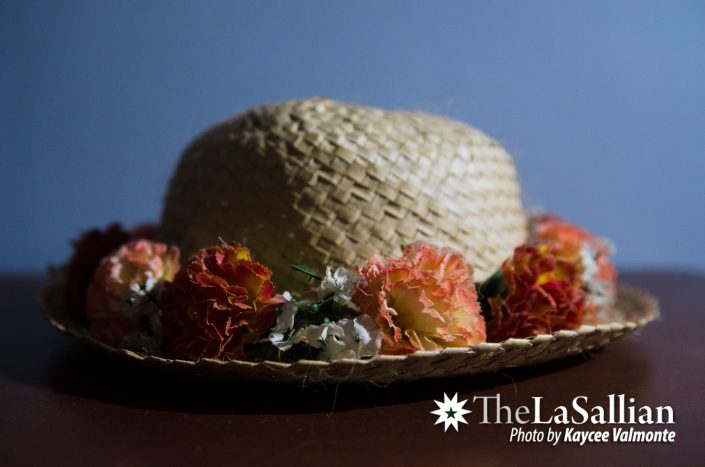Coy, timid, and reserved, she fans herself gently with a wooden hand fan, speaking softly without meeting your eyes. An image that represents the Filipina virtue is often summarized with a single iconic name: Maria Clara.
Her attributes are deeply embedded into our culture; the ideal woman should be dutiful, responsible, and most importantly, the quiet supporter of a man.
In an era of Maria Clara culture, our nation’s women fought social and economic oppression in their own. These women were still dutiful and responsible, not just for their loved ones but for their troops as well. They fearlessly led charges against their enemies using whatever weapons they had, from bolos to rifles. Damsels who wave their victory flags, they are heroes in their own merit–proclaiming loud and proud that courage excludes no gender.

Maria Clara and other myths
Our own history often tends to overlook our female heroes. They are recognized, but as expected of every patriarchal system, are often underrated by our media and textbooks. Rarely are their names mentioned in favor of the heroics of Bonifacio and the charm of Rizal. Like Wonder Woman, the portrayal of Filipina heroines are often dulled by over-sexualization or romanticism.
Once exceptional instant in Pinoy film is a segment of Heneral Luna early on in the movie that depicts Katipuneros running away from the field of battle. Their commanding officer taunts them for breaking rank while their female counterparts laugh in agreement. Aside from the image of the skirt-wearing medic gently patting a soldier’s face with a cloth, they cocked their guns straight ahead. Set aside as minor characters with very little will to speak up on their own, it’s the usual misapprehension that the typical Maria Clara has to be delicate, pretty, and di makabasag pinggan.
But the ideology that the Filipina woman ought to only follow a single ideal reflects the early obedience of the Filipinos to its colonizers.
A portion of how the Filipino society stifles women’s roles today can be traced back to Urbana and Feliza, the Spanish guidebook that instructs the decorum and behavior expected of a woman. With the initial assumption that before Spanish teachings, Filipinas were uncultured and uncivilized , Urbana and Feliza was introduced with the aim to tame the country’s women into the Spanish ideals of femininity.
Feminine mystique
It’s said that well behaved women seldom make history, but several Filipinas prove to be the exception. We know about Gabriela Silang, Tandang Sora, and Cory Aquino but does our history female empowerment end there? Are those three names all we have to offer when teaching our daughters that it’s your attitude and diligence that really matter in life?
Magdalena Leones is not one of the familiar faces in history textbooks, not the kind of name that rings a bell as a Filipina hero when you hear it, but her story speaks otherwise. Like her name, she was a true lioness, the only female to be awarded the distinction of the Silver Star during WWII. A former nun turned intelligence officer for the United States army, she was responsible for transporting radio parts and other supplies through enemy lines to her countrymen. The opposing forces also felt her claws when she single handedly devised a plan to obliterate the Japanese landing strip in Tuguegarao.
‘One of the boys’ is a label commonly used in millennial language. And it could mean many things. But moving the clock backwards, it used to mean so much more than heterosexual friendships or masculine behavior. Trinidad Tecson, a brave soldier who fought in a time when men were considered the dominant figures in the battlefield, was a fearless Bulakeña who represented the Filipina courage with her bolo and her opposition against the Spaniards. She procured arms for the revolution and had no qualms about entering battle alongside masculine figures.
Teresa Magbanua couldn’t leave the war to the men. The exact opposite occurred, rather. She not only saw battle but lead charges as unit commander in her native town of Capiz, winning battles as she went. After the arrival of the Americans and the succeeding war, she was still involved in several battles in Iloilo as a beloved and honored member of the Filipino forces.
Taking on what was considered the man’s job didn’t mean throwing away notions of femininity. Known as Kumander Liwayway, Remedios Gomez-Paraiso is worthy of her own Netflix series. Like her other female contemporaries, she rose quickly in the ranks of the Hukbalahap until she became one of the highest ranking officers. Her signature was her blood-red lipstick, loudly declaring her stance to the Japanese forces. One could say she was slaying in style. For her, the makeup and hair was a form of rebellion, commanding respect in more ways than one.
Countless other names go unrecorded by history. However, it goes unsaid that women played pivotal roles in shaping our country. They were wives, mothers, daughters, soldiers, pilots, commanders, and warriors. Each bringing tribute to what it means to be a lady and a woman. It wasn’t in the dress or makeup or how one conducted themselves in a social gathering, but rather in the heart’s passion and bravery.
Not your average girl-next-door
With so much influence coming in from the West, figures like Wonder Woman are still the forerunners in our minds when we think of the word heroine. What if we could change that? What if, instead of little girls clamoring for the latest Marvel costume of Black Widow, they do the same for Kumander Liwayway. We need not look farther than our own shores to find stories of bravery from our own G.I. Janes.
More importantly, we need to remind ourselves that the ideal Filipina is not afraid to get her hands dirty. When she sees injustice, her heart speaks; when she feels the need for change, the world will hear her roar. This is our true Maria Clara.
